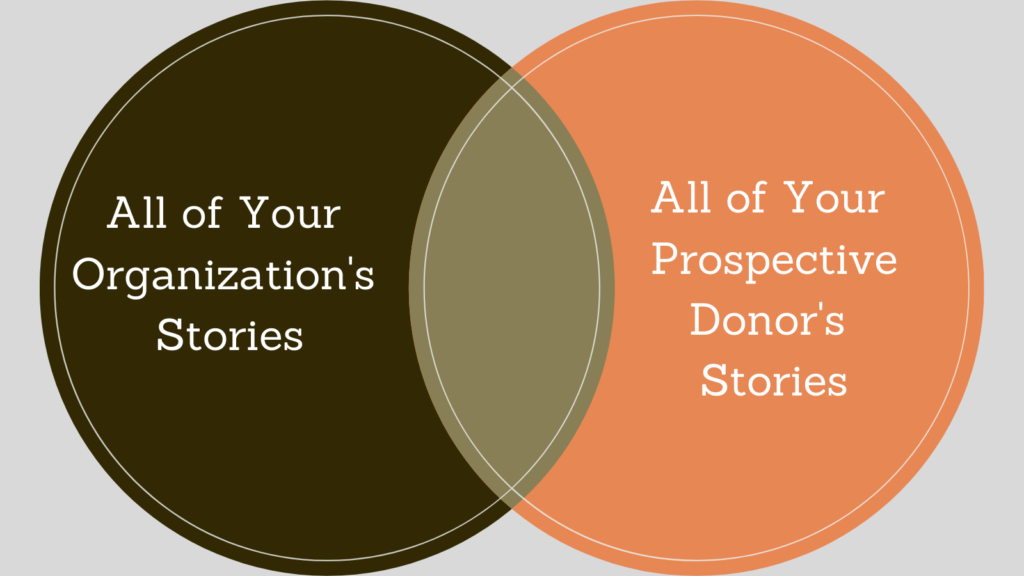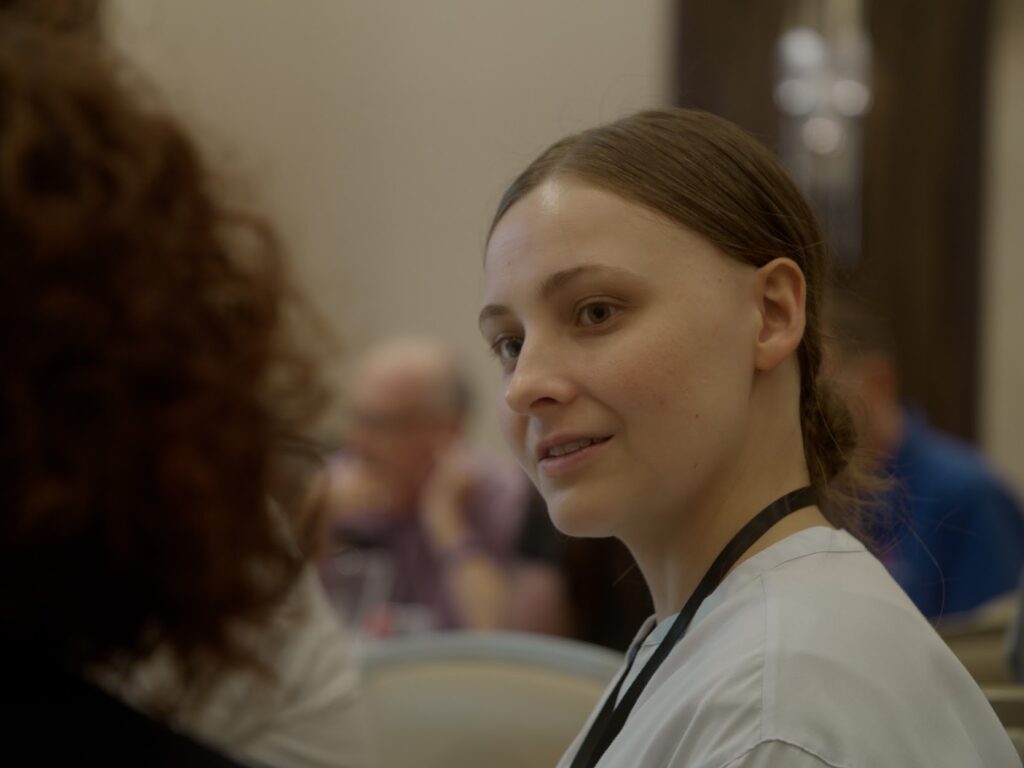April 5, 2021 / Esther Choy

Fundraisers have a huge opportunity to make connections if they are willing to talk with major donors with the sole intention of finding out these donors’ stories.
For six years, I taught in a major gifts strategy program at Kellogg School of Management while being a major gift donor myself. One thing puzzled me greatly. Fundraisers mostly learn from other fundraisers who are very rarely major gifts donors themselves. How do they know if their messaging actually resonates and their fundraising strategy actually works?
If you want to truly understand your audience and craft stories that will resonate with them, you want to get to know that exact group of people and understand their experiences. They are the best source to tell you what it is like to be them!
Such consumer research is common in the for-profit world. As Eric Ries has noted in The Lean Start-up, “Don’t ask why people don’t use your startup. Ask why the people who continue to use your startup keep using it.”
In other words, study the people who consistently choose to use your product.
Businesses take this very seriously. They hire consumer anthropologists and invest in understanding their users’ experiences. They observe closely and ask questions as users interact with the product. Sometimes they even visit people’s homes to watch them use products in their natural environment.
But too often, in the nonprofit world, fundraisers don’t reach this depth of ethnographic research on the people who keep donating.
While they do often conduct background research, there is no replacement for talking with donors directly and with a sense of childlike curiosity. Fundraisers have a huge opportunity to make connections and learn if they are willing to talk with donors with the sole intention of finding out who they are, what they worry about, and—most important of all—what they dislike.
Unfortunately, what often happens instead is that they learn major gift solicitation strategies from other fundraisers—senior, successful fundraisers, or former fundraisers turned consultants—not from the very people who are actually major gifts donors.
It’s time to go to the source. It’s time to understand the stories of your donor base.
“There is no replacement for talking with donors directly and with a sense of childlike curiosity.”
Why Leadership Storytelling Matters for Fundraising
Leadership storytelling is vital for fundraising executives. I define leadership storytelling as the intentional assertion of a point of view. Intentional is key. Fundraisers do tell stories, but the intent of their stories is not always well thought out. And, too often, the point of view of the story is often misaligned with their audience because they haven’t studied their donors in-depth.
When fundraisers and consultants do study their donors, the results can be eye-opening. For instance, after surveying donors who had contributed to nonprofits for an average of 32 years, fundraising consultant Penelope Burk discovered that “donor attrition is not yet on the radar screen of the fundraising industry even though it is the number one problem in the business,” as she noted Donor-centered Fundraising.
Why is attrition such an issue? Looking at the donor experience on a granular level reveals that donors find fundraising practices archaic. Moreover, they feel these practices do not demonstrate empathy.
Few donors have shared their experiences as publicly and candidly as Lisa Greer does in her new book Philanthropy Revolution, the first book on philanthropy written by a donor. She recently shared three takeaways fundraisers can learn from major donors.
1. Update Your Archaic Strategies
Philanthropy has been relying on the same strategies for far too long, says Greer. “Although fundraising, in some form, has been done for centuries,” Greer told me in an interview, “the current version is very similar to the way it was done in the early 1900s.”
At that time, Greer explains, fundraisers began “collecting data to identify and qualify prospects, arranging a lunch or similar meeting to ‘learn about the organization,’ and then to conduct the ‘ask’ that has been rehearsed prior to the lunch. It’s followed by a pile of papers being pushed across the table– documents that are likely to serve as a doorstop once brought home.”
This process is “arcane and even illogical,” says Greer, “especially for younger or newer donors.”
She cites Beth Breeze, director and co-founder of University of Kent’s Centre for Philanthropy, who notes that the only real change over the past several decades is that fundraising has been reframed from “at worst, a general irritation, to being commonly understood as an aggressive act.”
It’s time for an overhaul—one based on authenticity.
2. Be an Authentic Listener

Greer has mentioned that she does take some cold calls from fundraisers. I was curious—what makes the difference between those she takes and those she declines?
“Just like those marketing calls you get at dinnertime, if the call is someone just talking – and not listening, I’m not interested (regardless of what they’re selling’),” says Greer.
“If, on the other hand, the caller starts the conversation like any call with a colleague or acquaintance, I’m likely to let the pitch begin. If the caller or writer conveys a love of their organization’s mission, and if they know a bit about me that suggests I might also be interested in that mission, then we’re likely to have at least a decent chance of a successful result. If the call feels transactional from the outset (i.e. just get the money and run), then I’m out.”
From the fundraiser’s perspective, time can feel crunched. They know a wealthy donor is a busy donor. Not only that, the pressure’s on to make “the ask” correctly. All those things can lead them to say as much as possible right away. But aggressive listening is far more authentic and will lead to a stronger connection than a rushed pitch.
“Donors want to be more than a checkbook, ATM or piggy bank,” says Greer. “They also want to feel that they have an authentic relationship with the organizations they support.”
One fundraiser Greer spoke with took this to heart. He wondered how each of his organization’s major donors would like to be authentically thanked for giving. Greer suggested he simply ask them. Following her advice, he conducted an online survey to find out. He received over a 70% response rate—remarkable since most surveys receive somewhere between 20% and 30% response rates! From these survey responses, he learned a great deal from his donors.
“Asking them about how they feel about something is a direct attribute of a relationship,” says Greer, “as opposed to a transaction.”
Find out how donors prefer to interact, including how they want to be thanked. It’s deadly to assume that you already know, or that the old way of doing business is fine.
3. Research Your Donors’ Stories

To jump-start the process of listening well, research your donors before you call or meet with them.
“In my book I suggest what I call the ‘5 minute Google search,’” says Greer. “It really only takes five minutes to learn about the prospective donor as a human being. Knowing their financial ‘capacity’ is fine, but it’s pretty meaningless if the person clearly has interests that don’t include the sector that your nonprofit is in.”
What should fundraisers try to learn about a prospective donor? It can “run the gamut,” says Greer, “but some of them are their interests, their family, and their background (educational, work, etc.). Not only will that give you some background on the whole person – it will also give you connection points to further your relationship.”
To further understand your donor’s stories, start by interviewing your most loyal donors. At Leadership Story Lab, I advise my clients to use the following Venn diagram whenever they need to be persuasive yet authentic:

Tell the stories that overlap with a prospective donor’s stories, and you can begin to persuade them in ways that are authentic.
Tell Intersecting Stories
Telling intersecting stories is what we often do in relationships without even thinking about it. When we know people well, we tell stories that will resonate with them. We do this especially when we want to persuade them to look at something differently, convince them to join a cause, or even persuade them to check out a good podcast.
Persuasive stories enable you to establish rapport, build relationships, and earn trust from donors so that they see you as truly in the same tribe.
 Interview Loyal Donors
Interview Loyal Donors
To further understand your donors’ stories, start by interviewing your most loyal donors. Over the six years that I taught a Major Gift Solicitation Strategies course at Kellogg School of Management, I saw the value of having students understand their donors’ stories. I had students interview two or three donors who had supported them for the longest time and with the strongest enthusiasm.
The right mindset was paramount for them, as it is for all fundraisers. They had to ask the questions with true childlike curiosity, with an approach of “I’m really trying to learn something. Will you help me?”
They had to be prepared to be astonished by the donors’ answers. And most importantly, they had to be willing to change their minds and their methods in response to what they learned about who donors really are.
They had to become donor ethnographers.
So, armed with this mindset, I assigned three essential questions that every fundraiser should ask their donors.
- How did you first get involved?
- Why do you stay involved?
- What aspects of your involvement have been most rewarding?
The answers will be different for each donor and organization. The important thing is to listen and learn what this can tell you about those who consistently donate to your particular institution.
A New Passion
At an organization that is internationally renowned in the arts and culture space, a major gifts officer found that a longtime donor had become heavily involved in the organization after an accident kept her from an athletic activity she had loved. She was searching for a new passion, and this organization was just what she needed.
The Passion of Others
At a research foundation, on the other hand, it was the passion of others that a consistent donor found most rewarding. This person found the experts’ enthusiasm and engagement so inspiring that (pre-Covid), it prompted the donor to show up in person for every meeting, rather than opting to join virtually.
Leaving a Legacy
Another donor for an arts organization shared a deeply personal reason he stayed involved. The organization was his wife’s passion. After she passed away, he stayed involved to further her legacy. This illustrates why it is important to talk with donors one-by-one about their motivations. The significant, and even tragic, events of their lives can shape their involvement.
And after fundraisers understand why their donors are involved, they can act. Specifically, they can strengthen bonds with these donors and others who may value similar aspects of what the organization does.
My curiosity about donors’ life experiences led me to complete a research study on first-generation wealth creators (FGWs), and their relationship with wealth and philanthropy. The report reveals that “wealthy” represents a set of values FGWs simply don’t adhere to.
Read Leadership Story Lab’s research, “Transforming Partnerships with Major Donors.”
Related Articles
3 Storytelling Secrets To Winning Major Gifts
The One Category of Major Donors Fundraisers Can’t Miss
Better Every Story
"This is an amazing and insightful post! I hadn’t thought of that so you broadened my perspective. I always appreciate your insight!" - Dan B.
Join the thousands who receive Esther Choy’s insights, best practices and examples of great storytelling in our twice monthly newsletter.


